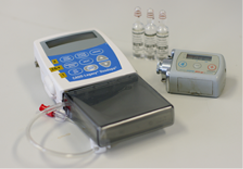Parkinson’s Disease
What is Parkinson’s disease?
Parkinson’s disease is caused by progressive degeneration of the nervous system due to deposits of an abnormal protein called alpha-synuclein, leading to formation of characteristic lewy bodies.
Can Parkinson’s disease affect young people?
Parkinson’s disease is a common condition affecting 80,000 people in Australia. While Parkinson’s disease more commonly affects older patients (one in a hundred people over 60 years will be affected by Parkinson’s disease), it can also affect younger people (<65 year old). About 12,000 Australians with Parkinson’s disease are in their working age.
What are some common symptoms of Parkinson’s disease?
Classic movement related symptoms of Parkinson’s disease include slowing, muscle rigidity, tremor, walking difficulties and impaired balance. These symptoms are predominantly due to degeneration of brain cells producing a natural chemical called dopamine.
What else can Parkinson’s disease cause?
Non-movement related symptoms are increasingly recognised and may even precede the onset of movement problems by many years. There are numerous non-movement related symptoms with the most common ones being loss of smell, fatigue, constipation, bladder frequency, sleep disturbances (particularly tendency to act out dreams), anxiety and depression. These symptoms are mostly related to degeneration of brain cells producing biochemicals other than dopamine.
Can Parkinson’s disease be cured?
Parkinson’s disease inevitably progresses over time. The progression is slow, over many months to years. There is currently no cure or treatment that halts or slows the progression of disease.

What treatment options are available in Parkinson’s disease?
Management of Parkinson’s disease aims at relief of symptoms (predominantly movement related symptoms) by replenishing dopamine in the brain. Levodopa (Sinemet, Madopar, Kinson) is the “gold standard” of treatment. It is converted into dopamine in the brain. When used in conjunction with entacapone (Comtan, Stalevo), the duration of action of levodopa is extended. Other treatment options include dopamine agonists (Sifrol, Neupro) and monoamine oxidase B inhibitors (Azilect). In more advanced stages of disease where oral medications are no longer controlling symptoms adequately, apomorphine (injections or infusion), Duodopa and deep brain stimulation surgery can be considered. Selection of treatment at any stage of disease very much depends on individual circumstances and preference.

